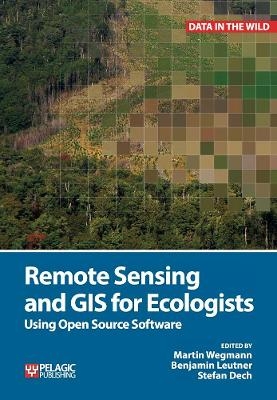
Remote Sensing and GIS for Ecologists
Pelagic Publishing (Verlag)
978-1-78427-023-0 (ISBN)
This is a book about how ecologists can integrate remote sensing and GIS in their daily work. It will allow ecologists to get started with the application of remote sensing and to understand its potential and limitations. Using practical examples, the book covers all necessary steps from planning field campaigns to deriving ecologically relevant information through remote sensing and modelling of species distributions.
All practical examples in this book rely on OpenSource software and freely available data sets. Quantum GIS (QGIS) is introduced for basic GIS data handling, and in-depth spatial analytics and statistics are conducted with the software packages R and GRASS.
Readers will learn how to apply remote sensing within ecological research projects, how to approach spatial data sampling and how to interpret remote sensing derived products. The authors discuss a wide range of statistical analyses with regard to satellite data as well as specialised topics such as time-series analysis. Extended scripts on how to create professional looking maps and graphics are also provided.
This book is a valuable resource for students and scientists in the fields of conservation and ecology interested in learning how to get started in applying remote sensing in ecological research and conservation planning.
Martin Wegmann has a PhD in remote sensing focusing on time-series analysis on land cover change and fragmentation in Africa. He is an assistant professor at the Global Change Ecology Msc program at the University of Würzburg, Germany and runs courses in remote sensing analysis for biodiversity and conservation. Benjamin Leutner is a research assistant at the department of remote sensing at the University of Würzburg. He has extensive experience in geo-spatial analysis of remote sensing data using Open Source software. Stefan Dech is director of the German Remote Sensing Data Center (DFD) since 1998, and current spokesman of the Earth Observation Center (EOC) at the German Aerospace Center (DLR). Since 2001 he has held the Chair for Remote Sensing at the Institute of Geography and Geology of the University of Würzburg.
Introduction
1 Spatial Data and Software
2 Introduction to Remote Sensing and GIS
3 Where to Obtain Spatial Data?
4 Spatial Data Analysis for Ecologists: First Steps
5 Pre-Processing Remote Sensing Data
6 Field Data for Remote Sensing Data Analysis
7 From Spectral to Ecological Information
8 Land Cover or Image Classification Approaches
9 Land Cover Change or Change Detection
10 Continuous Land Cover Information
11 Time Series Analysis
12 Spatial Land Cover Pattern Analysis
13 Modelling Species Distributions
14 Introduction to the added value of Animal Movement Analysis and Remote Sensing
Outlook and Acknowledgements
Index
| Erscheint lt. Verlag | 1.2.2016 |
|---|---|
| Reihe/Serie | Data in the Wild |
| Zusatzinfo | 4 Tables, black and white; 220 Figures |
| Verlagsort | Exeter |
| Sprache | englisch |
| Maße | 170 x 244 mm |
| Gewicht | 928 g |
| Themenwelt | Informatik ► Datenbanken ► Data Warehouse / Data Mining |
| Naturwissenschaften ► Biologie ► Ökologie / Naturschutz | |
| Naturwissenschaften ► Geowissenschaften ► Geografie / Kartografie | |
| ISBN-10 | 1-78427-023-7 / 1784270237 |
| ISBN-13 | 978-1-78427-023-0 / 9781784270230 |
| Zustand | Neuware |
| Haben Sie eine Frage zum Produkt? |
aus dem Bereich


